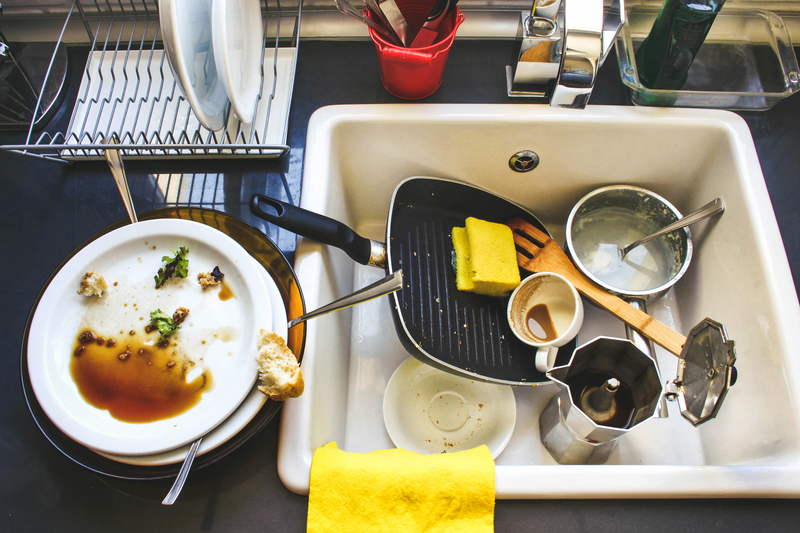How Experts Ensure Sofas Stay Perfect Throughout Storage
When it comes to preserving the integrity and appearance of sofas during storage, professional movers and furniture preservationists take strategic steps to safeguard these valuable items. Proper sofa storage is not just about tucking a piece of furniture away--it requires meticulous attention to materials, environment, and handling. In this article, we'll thoroughly explore how experts ensure sofas stay perfect throughout storage, providing actionable advice, industry secrets, and insights into best practices.

Understanding the Challenges of Storing Sofas
Sofas are not only large and heavy--they are also made up of materials that are sensitive to heat, moisture, dust, and pressure. From leather and fabric to wood and metal accents, the very characteristics that make sofas stylish also make them vulnerable during storage. Let's delve into the principal risks:
- Moisture and Mildew: High humidity or damp environments can cause mold, mildew, or rot, especially for upholstery and wooden frames.
- Dust and Dirt Accumulation: These particles settle into fibers and crevices, potentially causing permanent discoloration and fabric wear.
- Temperature Fluctuations: Excessive heat or cold can lead to material warping, cracking, or shrinking.
- Pest Infestation: Rodents and insects are attracted to cushioning and wood, spelling danger for neglected sofas.
- Structural Deformation: Placing sofas in an unsuitable position or stacking items can deform cushions and frames.
Experts recognize these challenges and employ specialized techniques to ensure sofas remain in pristine condition throughout their storage period.
Pre-Storage Preparation: The Foundation for Perfect Sofa Storage
Thorough Cleaning of Upholstery and Frames
The first, and possibly most crucial, step is comprehensive cleaning. Any dirt, food crumbs, or spilled liquids left on the sofa can become host to bacteria or attract pests during storage. Here's how experts approach it:
- Vacuuming all surfaces, including cushions, under the seats, and in crevices.
- Treating stains promptly using fabric-specific or leather-safe cleaning agents. For example, a microfiber couch benefits from a gentle water-based cleaner, while leather requires conditioners after cleaning.
- Allowing all cleaned surfaces to dry completely before moving to the next step, preventing moisture-related issues.
Disassembly When Possible
To minimize pressure on frames and cushions and facilitate easier transportation, experts prefer to:
- Remove detachable parts, such as legs, backrests, arms, and cushions. This not only prevents breakage but also makes it easier to wrap individual components.
- Label hardware and place all nuts, bolts, and small parts in clear, labeled bags attached to the main sofa frame.
Applying Protective Products
For additional protection, experts may apply fabric protectors or leather conditioners. These products add a barrier against dust, stains, and cracking. Industry professionals emphasize using only non-silicone, non-oil-based products to avoid attracting more grime or causing chemical reactions during storage.
Ideal Storage Conditions for Ensuring Sofa Perfection
The heart of successful long-term sofa storage lies in controlling the storage environment. This is where expert knowledge comes into play.
Choosing the Right Storage Facility
- Climate-Controlled Units: The gold standard for sofa preservation. These units maintain stable temperature and humidity levels year-round, protecting both fabric and wood components.
- Cleanliness: Experts opt for facilities with a strong reputation for cleanliness and pest control, ensuring that no rodents or insects will damage stored sofas.
- Security: High-quality storage facilities use surveillance cameras, alarms, and on-site personnel, reducing the risk of theft or vandalism.
Optimal Positioning Inside the Storage Unit
- Upright, Not Stacked: Sofas should be kept upright, standing on their legs or resting evenly on their frames. Never stack sofas or place heavy items on them, which could crush cushions or warp the frame.
- Avoiding Walls: Place sofas slightly away from the walls to ensure good air circulation, which helps prevent condensation and mildew.
- Elevating Above Floor: Use wooden pallets or plastic risers to keep sofas off the ground, shielding from potential dampness and pests.
Professionals also avoid plastic wraps directly on upholstery for long-term storage, as this can trap moisture and foster mold growth. Instead, breathable covers such as cotton or specialty furniture blankets are used, allowing air to circulate while protecting against dust.
Packaging Techniques that Ensure Sofas Stay Perfect Throughout Storage
Wrap with Precision
- Cushions and Removable Parts: Wrap individually in cotton sheets or acid-free paper. Professionals may place small sachets of silica gel inside cushion covers to absorb any residual moisture.
- Main Sofa Body: Encase with soft moving blankets secured with tape or stretch wrap--but never directly against delicate fabric or leather.
- Legs and Frames: Bubble-wrap or foam padding protects legs, arms, and delicate woodwork from dings and scratches.
Label each wrapped part clearly to make reassembly easier and to ensure correct handling at every stage.
Ventilation Is Key
Expert handlers always consider air flow when arranging sofas in storage. There's a delicate balance between creating a barrier against dust and allowing for sufficient ventilation to avoid moisture buildup.
- Never use airtight plastic for extended storage. Choose breathable, dust-resistant covers instead.
- Space stored items so air can circulate freely between and around them.
Preventive Measures for Long-Term Sofa Storage
Pest Prevention
Professionals understand that warehouses and even top-tier storage units can attract pests. Their methods include:
- Spraying non-toxic pest repellents in the storage unit before moving sofas in.
- Placing cedar blocks or lavender sachets, which naturally deter moths and insects, around and under the sofa.
- Installing rodent traps if appropriate to the storage environment.
Routine Monitoring and Maintenance
- Regular Check-Ins: Experts schedule periodic visits to inspect for dust, moisture, and pests. Early detection prevents minor issues from becoming big problems.
- Dehumidifiers and Moisture Absorbers: In particularly humid areas, it's wise to place dehumidifiers or moisture-absorbing crystals in the unit to maintain ideal humidity levels.
- Readjusting and Airing Out: If possible, professionals will periodically air out the sofa, fluff cushions, and gently brush surfaces to avoid permanent compression marks.
Special Considerations: Leather and Antique Sofas
Not all sofas are created equal. Leather sofas and vintage or antique pieces require additional care:
- Leather Care: Experts apply a high-quality conditioner before storage and ensure the sofa is NEVER wrapped in plastic. Leather needs to breathe to avoid cracking or molding.
- Antique Sofas: These often feature intricate woodwork and fragile fabrics. Specialized padding, custom crates, and professional appraisal before and after storage are strongly advised.
In some cases, experts coordinate with conservators for unique or particularly valuable items, ensuring white-glove transport and climate-controlled preservation every step of the way.
How to Choose a Professional Sofa Storage Provider
If you decide that your sofa's safety is worth a professional touch, look for the following attributes in a sofa storage or moving company:
- Transparency: Clear policies on care, security, and insurance.
- Experience with High-End Furniture: Providers who specify handling antique or designer sofas set a higher standard.
- Environmental Controls: Access to climate-controlled facilities and advanced pest management.
- Custom Packaging Solutions: Ability to provide specialized packing materials and techniques for your sofa type.
- Comprehensive Insurance: Ensure your sofa is covered against all risks during storage and transit.

Additional Tips for Owners: Maximizing Sofa Storage Success
If you want to implement expert strategies yourself, remember these golden rules:
- *Always clean and condition your sofa* before storage.
- Use only breathable, well-fitted covers made for furniture storage.
- Inspect your storage unit for leaks or pests before placing your sofa inside.
- Keep the sofa off the ground and away from walls.
- Visit and check on your furniture occasionally, especially if storing it for several months or longer.
Never underestimate the value of careful, deliberate preparation--it's the simplest way to ensure your sofa looks as good coming out of storage as it did going in.
Conclusion: Expert Methods Keep Sofas Pristine During Storage
The methods described above are not merely good practice--they are the *industry standard* among professional movers and furniture preservationists. By focusing on cleaning, disassembly, protective packaging, controlled environments, and regular maintenance, experts make certain that even the most delicate sofas stay perfect throughout storage.
Whether you're entrusting a family heirloom to a specialist, or simply want to look after your investment in quality furniture, following these meticulous strategies ensures that you'll retrieve your sofa in fantastic condition. Remember, the secret to ensuring sofas stay perfect throughout storage always lies in proactive, thoughtful care--applied with both knowledge and diligence.



